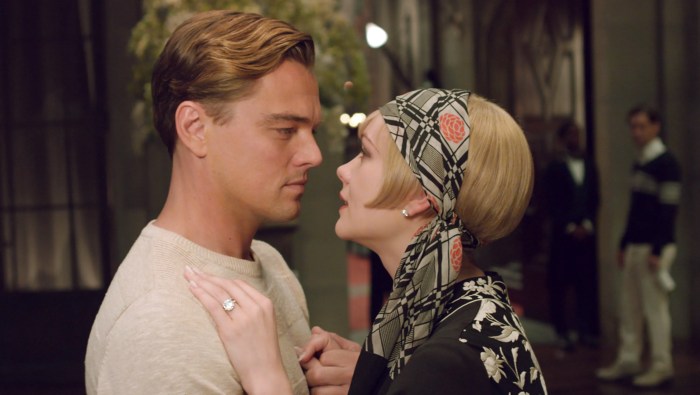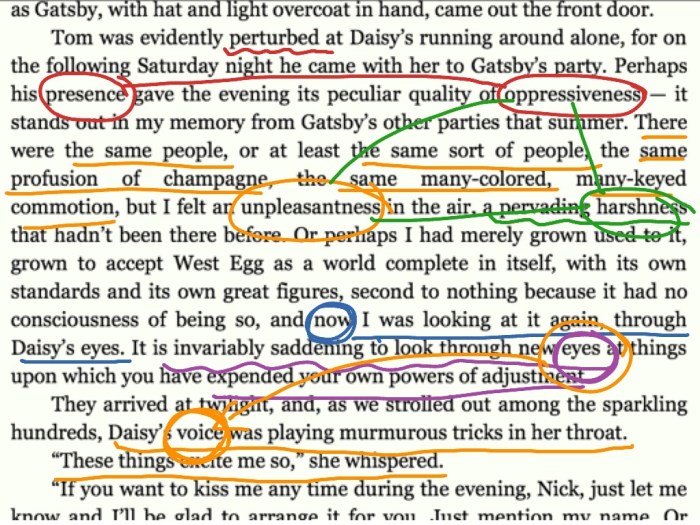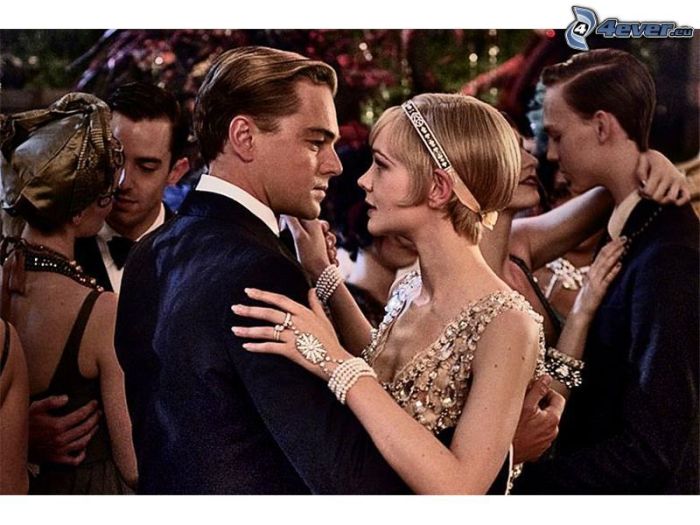In F. Scott Fitzgerald’s literary masterpiece, The Great Gatsby, the letter from Gatsby to Daisy stands as a pivotal moment, revealing the depth of Gatsby’s longing and the complexities of Daisy’s character. As we delve into this poignant missive, we will explore the motivations, desires, and emotions that intertwine within its pages, offering a fresh perspective on this timeless classic.
Gatsby’s letter, a testament to his unwavering love for Daisy, unravels a tale of longing, regret, and the pursuit of the American Dream. Through its heartfelt words and evocative imagery, we witness Gatsby’s unwavering belief in the possibility of rekindling their past romance, despite the obstacles that lie before him.
Historical Context

The Great Gatsby is a novel written by F. Scott Fitzgerald that follows the story of Jay Gatsby, a self-made millionaire who throws lavish parties in his West Egg mansion in the hopes of winning back Daisy Buchanan, a woman he loved and lost five years earlier.
The novel was written during the Jazz Age, a period of economic prosperity and social change in the United States. The Roaring Twenties, as it was also known, was a time of great optimism and excess, but it was also a time of great social inequality and moral decay.
The Great Gatsby as a Reflection of the Jazz Age
The Great Gatsby is a reflection of the Jazz Age in many ways. The novel’s characters are wealthy and carefree, and they spend their time partying and drinking. They are also deeply unhappy, and they are all searching for something more in life.
The novel also reflects the social inequality of the Jazz Age. Gatsby is a self-made man, but he is never fully accepted by the upper class. Daisy Buchanan is a member of the upper class, but she is unhappy in her marriage to Tom Buchanan.
The novel suggests that the American Dream is not available to everyone, and that even those who achieve it may not be happy.
Character Analysis: Jay Gatsby: Letter From Gatsby To Daisy
Gatsby’s letter to Daisy provides a glimpse into his motivations, desires, and feelings towards her. His letter reveals a complex and passionate man, consumed by his love for Daisy and driven by a desire to win her back.
Gatsby’s Motivations and Desires
Gatsby’s motivations are rooted in his love for Daisy. He longs to recapture the past, to recreate the idyllic romance they shared before he went to war. Gatsby’s desire for Daisy is all-consuming; he is willing to do anything to win her back, even if it means bending the truth or resorting to deception.
Gatsby’s Feelings Towards Daisy
Gatsby’s feelings towards Daisy are expressed in the letter through his use of language and imagery. He describes her as “the most beautiful girl in the world” and “the only girl I ever loved.” Gatsby’s language is full of longing and adoration, and his words convey the depth of his love for Daisy.
Symbolism and Imagery in the Letter
Gatsby’s letter is rich in symbolism and imagery. The green light at the end of Daisy’s dock represents Gatsby’s hope for a future with her. The Valley of Ashes, where Gatsby’s mansion is located, symbolizes the emptiness and disillusionment that Gatsby feels in his life without Daisy.
Character Analysis: Daisy Buchanan

Daisy Buchanan, a central character in “The Great Gatsby,” is a complex and enigmatic figure. Her relationship with Jay Gatsby is at the heart of the novel, and her perspective and feelings towards him play a crucial role in shaping the story.
Daisy’s Character and Gatsby’s Love
Daisy is a wealthy, beautiful woman who grew up in a privileged world. She is used to getting what she wants and is often seen as selfish and shallow. However, beneath her superficial exterior, there is a vulnerable and romantic side to Daisy.
She is drawn to Gatsby’s wealth and glamour, but she also genuinely cares for him and believes that he can give her the love and happiness she has always longed for.
Daisy’s Perspective on Gatsby’s Letter
When Daisy receives Gatsby’s letter, she is torn between her feelings for him and her desire to maintain her comfortable life with Tom. She is flattered by Gatsby’s attention and his declaration of love, but she is also aware of the potential consequences of an affair.
Daisy’s perspective is shaped by her social status, her fear of scandal, and her desire for stability.
Daisy’s Character Development
Through her response to Gatsby’s letter, Daisy’s character is further developed. Her initial reluctance to leave Tom shows her sense of duty and her fear of change. However, her eventual decision to run away with Gatsby reveals her longing for love and her willingness to take risks.
The letter serves as a catalyst for Daisy’s growth, as it forces her to confront her true feelings and make a difficult choice.
Literary Analysis

Gatsby’s letter to Daisy is a carefully crafted piece of writing that reveals his innermost thoughts and emotions. It is structured as a chronological account of their relationship, beginning with their first meeting and ending with his plea for her to return to him.
Structure and Organization
The letter is divided into four distinct sections:
- An introduction that establishes the setting and Gatsby’s purpose for writing.
- A description of their first meeting and the subsequent development of their relationship.
- An account of Gatsby’s wartime experiences and his return home.
- A plea for Daisy to leave her husband and start a new life with him.
This structure allows Gatsby to build a compelling narrative that gradually draws the reader into his world and his perspective on their relationship.
The letter from Gatsby to Daisy is a powerful and moving expression of love and longing. It reminds me of the story of Johnny Lingo, who bought his wife for eight cows johnny lingo 8 cow wife . The love and devotion that Gatsby expresses in his letter is similar to the love that Johnny Lingo had for his wife.
Both men were willing to sacrifice everything for the women they loved.
Use of Language, Tone, and Imagery, Letter from gatsby to daisy
Gatsby’s letter is characterized by its use of vivid language, evocative imagery, and a passionate tone. He employs a range of literary devices, including metaphors, similes, and personification, to create a rich and sensory experience for the reader.
The tone of the letter shifts throughout, from nostalgic and romantic to desperate and pleading. Gatsby’s use of language and imagery reflects his own emotional state, which is constantly fluctuating between hope and despair.
Contribution to Overall Meaning and Impact
The letter’s structure, organization, and use of language, tone, and imagery all contribute to its overall meaning and impact. The chronological structure allows Gatsby to present a coherent and compelling account of his relationship with Daisy.
The vivid language and evocative imagery create a powerful emotional connection between Gatsby and the reader, while the passionate tone conveys the depth of his feelings for Daisy. The letter’s overall impact is one of longing, regret, and ultimately, a desperate plea for a second chance.
Thematic Analysis

F. Scott Fitzgerald’s letter from Gatsby to Daisy is a poignant exploration of several major themes, including love, loss, and the American Dream. These themes are developed and explored through the letter’s content in various ways.
Love
The letter is a testament to Gatsby’s enduring love for Daisy. He expresses his longing for her, his desire to be with her, and his willingness to do anything to win her back. Gatsby’s love for Daisy is a driving force in his life, and it ultimately leads to his downfall.
Loss
The letter also explores the theme of loss. Gatsby has lost Daisy to Tom Buchanan, and he is struggling to come to terms with this loss. He feels a sense of emptiness and despair, and he is unable to move on with his life.
The letter is a powerful exploration of the pain and grief that can come with loss.
The American Dream
The letter also reflects on the American Dream. Gatsby is a self-made man who has achieved great wealth and success. However, he is unable to find happiness because he cannot have Daisy. The letter suggests that the American Dream is not always attainable, and that it can sometimes lead to disappointment and disillusionment.
Comparative Analysis
The letter from Gatsby to Daisy is a powerful and moving piece of literature that explores the themes of love, loss, and regret. It can be compared to other works of literature that explore similar themes, such as “The Great Gatsby” by F.
Scott Fitzgerald, “Romeo and Juliet” by William Shakespeare, and “Wuthering Heights” by Emily Brontë.
One of the most striking similarities between the letter and these other works is the way in which they all explore the destructive power of love. In “The Great Gatsby,” Gatsby’s love for Daisy ultimately leads to his downfall. In “Romeo and Juliet,” the love between the two title characters leads to their tragic deaths.
And in “Wuthering Heights,” the love between Heathcliff and Catherine Earnshaw is so intense that it consumes them both.
Another similarity between the letter and these other works is the way in which they all explore the theme of regret. In the letter, Gatsby expresses his regret over the way he has treated Daisy in the past. In “The Great Gatsby,” Gatsby regrets not being able to win Daisy back.
And in “Wuthering Heights,” Heathcliff regrets the way he has treated Catherine.
However, there are also some important differences between the letter and these other works. One of the most significant differences is the way in which the letter is written. The letter is written in a very personal and intimate style, and it gives the reader a glimpse into Gatsby’s innermost thoughts and feelings.
In contrast, the other works are written in a more formal and objective style.
Another difference between the letter and these other works is the way in which it explores the theme of hope. In the letter, Gatsby expresses his hope that he and Daisy will be able to be together again. In contrast, the other works are more pessimistic about the possibility of love overcoming adversity.
Overall, the letter from Gatsby to Daisy is a powerful and moving piece of literature that explores the themes of love, loss, and regret. It can be compared to other works of literature that explore similar themes, but it also has its own unique qualities that make it a valuable addition to the literary canon.
FAQ Compilation
What is the significance of the letter from Gatsby to Daisy?
The letter serves as a pivotal moment in the novel, revealing Gatsby’s unwavering love for Daisy and his desperate desire to win her back.
How does the letter reflect Gatsby’s character?
The letter showcases Gatsby’s romanticism, idealism, and determination, as well as his vulnerability and insecurity.
What is Daisy’s response to the letter?
Daisy’s response is complex and ambivalent. While she is touched by Gatsby’s words, she ultimately chooses to stay with her husband, Tom.